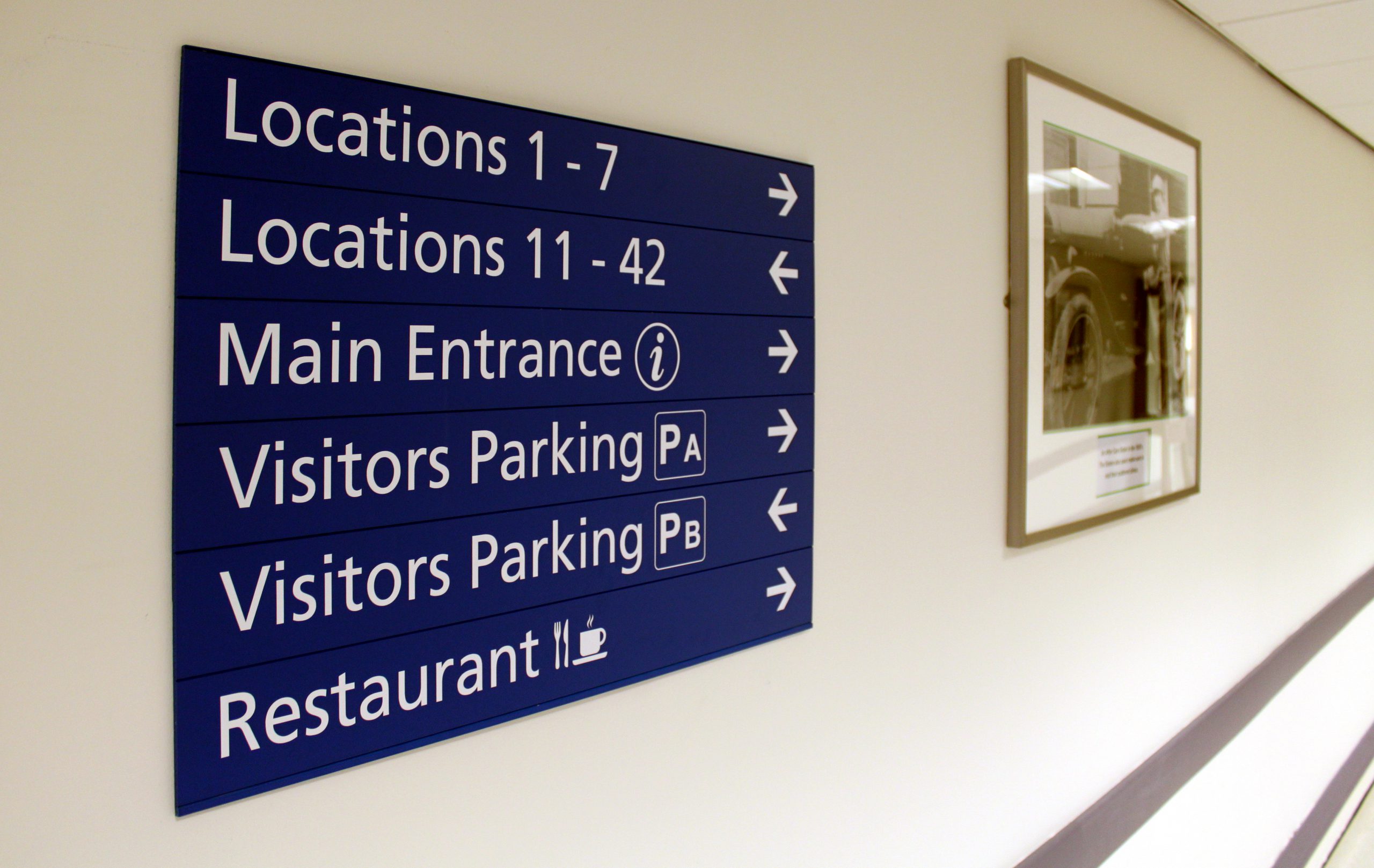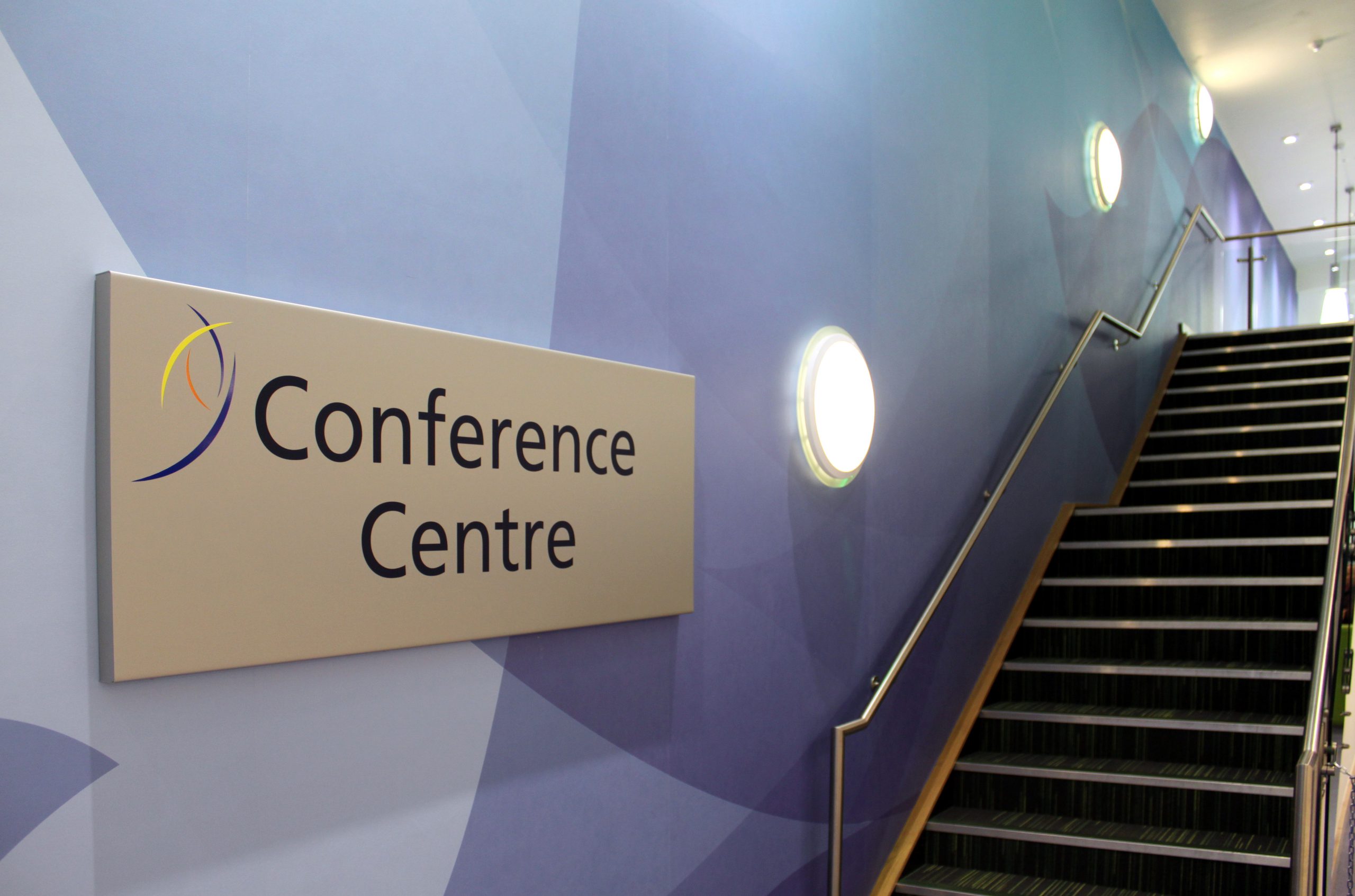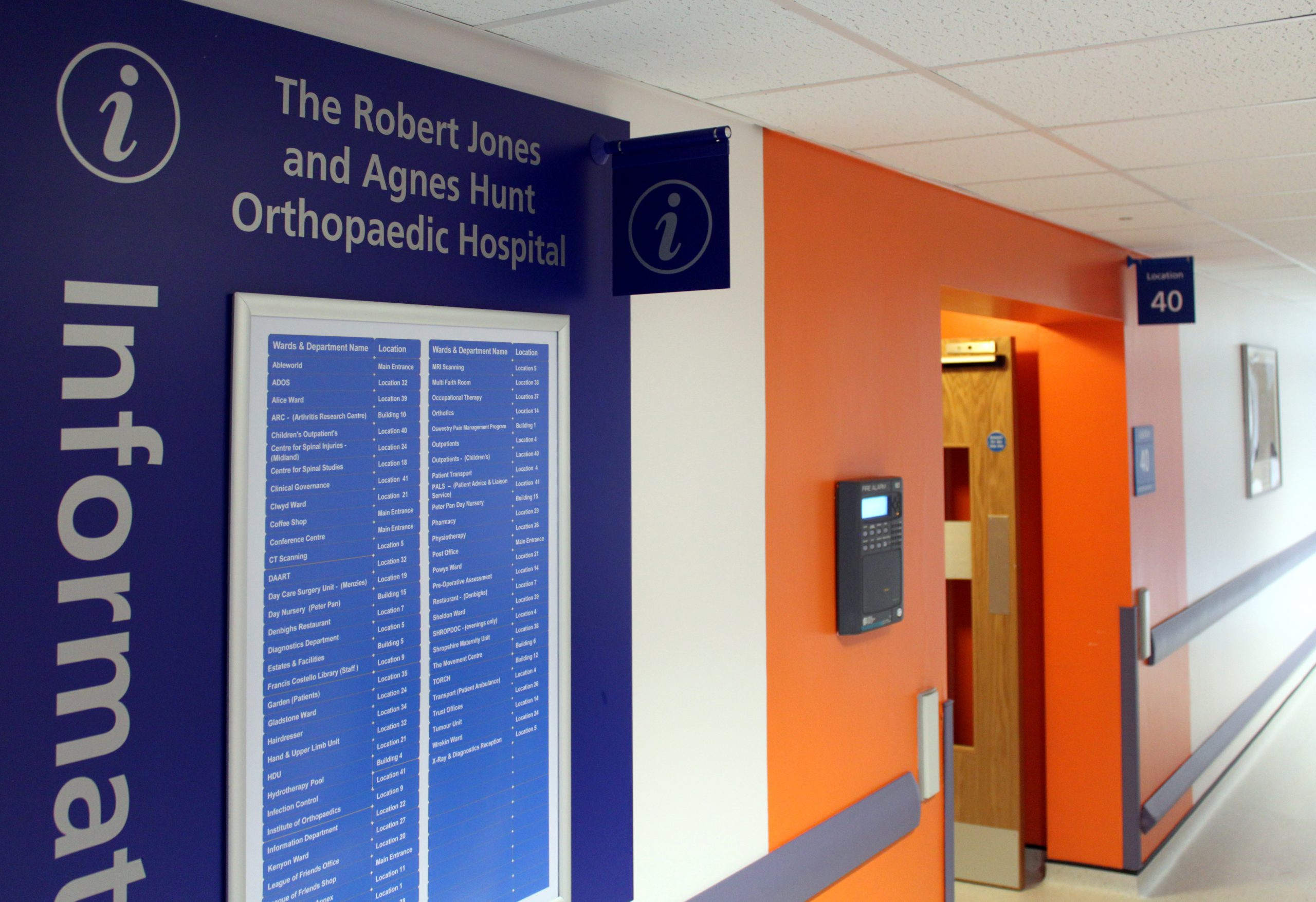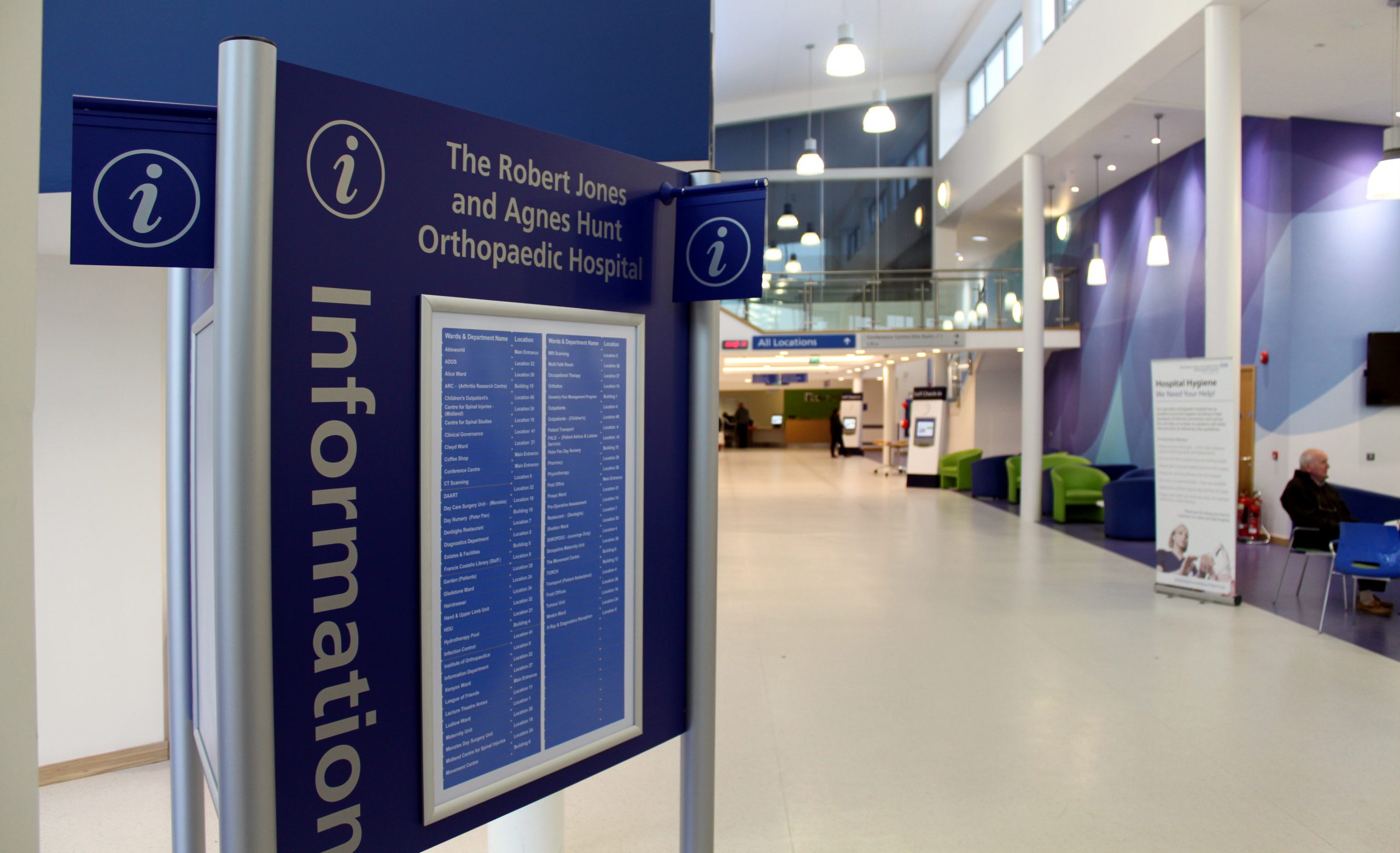Robert Jones and Agnes Hunt Hospital
Robert Jones and Agnes Hunt Hospital NHS Foundation Trust (RJAH) in Shropshire has been recognised by national and international medical circles as a centre of excellence in the field of Orthopaedic treatment and Care. However for a number of years the quality of the built environment had been unable to reflect the high standard of treatment and this had affected the organisation’s corporate image.
Wayfinder UK was commissioned by RJAH to undertake a wayfinding analysis of the site, paying particular attention to signage and visual communications. We were asked to identify all factors effecting the efficient movements of all user groups including patients, visitors and staff around the facility.
The consultants noted upon analysis huge problems with consistency regarding the sign strategy at the across all areas of the site. A clear lack of consistent design and poor placement in signage was leaving many patients bewildered. Without any clear pattern to identify with, it was difficult for many of the cognitive processes that normally support navigation to work effectively. The team also observed a large number of ‘Home-made’ signs on site. This added unnecessary complications to the system, as well as creating a very poor image. So many ‘Home-made’ signs meant that the strategy in place was simply not working.
Another challenge the consultants faced was establishing a clear link between the correspondence sent to a patient and the signage encountered. In order to work effectively all appointment letters to invite patients to the hospital must match the overall hospital strategy. The consultants put together a strategy specifically to tackle this problem.
At the car park entrance there was simply too much information for the driver to take in whilst remaining in safe control of a vehicle. Many drivers were subconsciously choosing to continue past the entrance, preferring to remain safe rather than risk a sudden manoeuvre. Therefore a plan was designed regarding the entrance, exits and carparks across the site in order to encourage efficiencies on leaving and entering the site. The intention of the new hospital wayfinding strategy was to define and clearly emphasise a primary or default route for the majority of users arriving on site via the main visitor’s car park. The team also thought it was important to identfy a clear landmark in order to make exiting easier. The strong identification of the ‘Main Entrance’ would help aid first time or unfamiliar users by providing them a clear reference point.

Overall the project was a huge success, praised by both staff and visitors at the hospital. There have been clear improvements regarding navigating the site, which has meant patients and visitors have reported less stressed when visiting. The wayfinding strategy created has considered all aspects of the site, including the complications regarding parking. Communications within the hospital were also assessed so they could work in harmony with the new wayfinding system. The signage implemented is clean, consistent and corporate, boosting the brand image of the hospital. The design chosen represents the NHS colour spec and is therefore easily recognised by first time users of the site.
Hospital Wayfinding
In addition to the project showcased here, Wayfinder have delivered wayfinding projects to lots of other clients in this sector. Here are just a selection of them:
- Airedale Hospital, Yorkshire
- The Christie, Manchester
- The Christie @ Salford Royal Hospital
- The Christie @ Royal Oldham Hospital
- Kensington and Chelsea Hospital
- Springfield University Hospital
- University Hospitals Bristol
- Bristol Royal Infirmary
- St Michael’s Hospital Bristol
- Royal United Hospital Bath (four hospitals on site)
- Royal Blackburn Hospital
- Blackpool Fylde and Wyre Hospital Trust
- Blackpool Victoria Hospital
- Bristol Royal Hospital for Children
- St Bart’s Hospital London
- Harlow Hospital
- The Princess Alexandra Hospital Trust
- Health Care Professions Council (HCPC)
- Gabowen Hospital
- Robert Jones and Agnes Hunt Orthopaedic Hospital
- The Royal Wolverhampton Hospitals Trust
- New cross hospital
- Addenbrooke’s Hospital Cambridge
- Bolton One Health centre
- St Charles Hospital, London
- South West London and St George’s Trust
- Queen Victoria Hospital East Grinstead
- Hull University Teaching Hospitals
- Hull Royal Infirmary
- Castle Hill Hospital Hull
- The Christie Proton Beam Centre (first in the UK)
- Clatterbridge Cancer Hospital Liverpool
- Royal Victoria Infirmary Newcastle
- Wythenshawe Manchester
- The Princess Alexandra Harlow
- Mid Yorkshire Hospitals NHS Trust
- Pinderfields Hospital
- Dewsbury and District Hospital
- Pontefract Hospital
- Wye Valley NHS Trust
- Stratford Hospital
Our Wayfinding Process
This website is designed to offer only general information, therefore the content does not explain the important technical details involved in the wayfinding process.
Such information is restricted to client briefings, in order to protect our intellectual property. As this information is vital to your understanding of our services and the many benefits, we are more than happy to explain in detail, either over the telephone or face to face.
To find out more, please email enquiries@wayfinding.co.uk to arrange a free, no obligation telephone conversation with one of our senior consultants.



